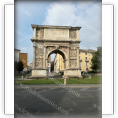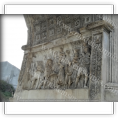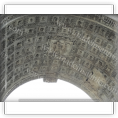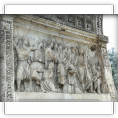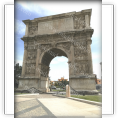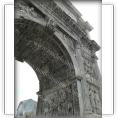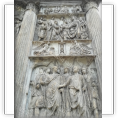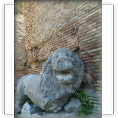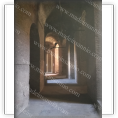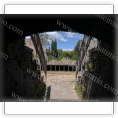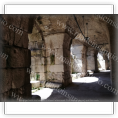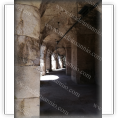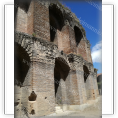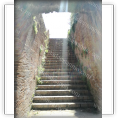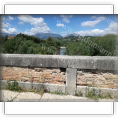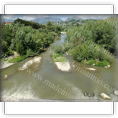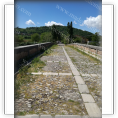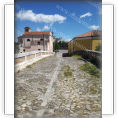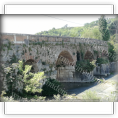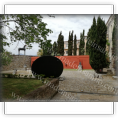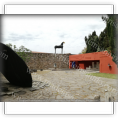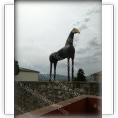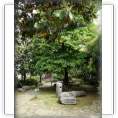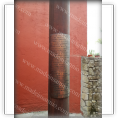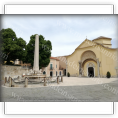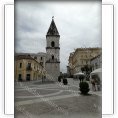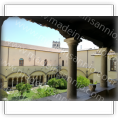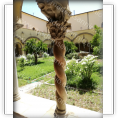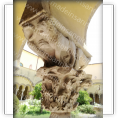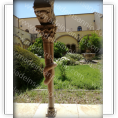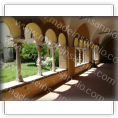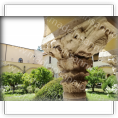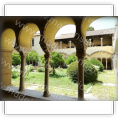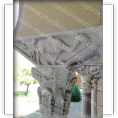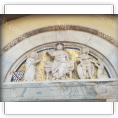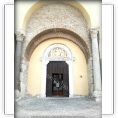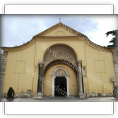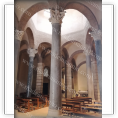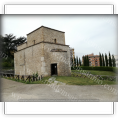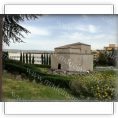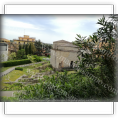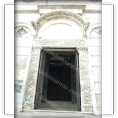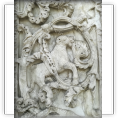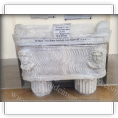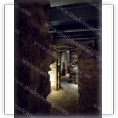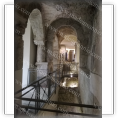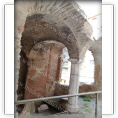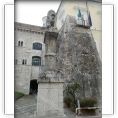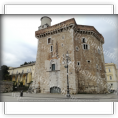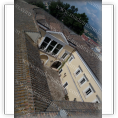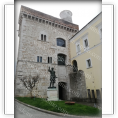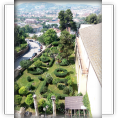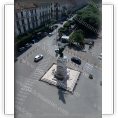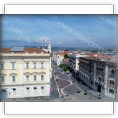Main menu:
The birth of the City of Benevento is attributed to the legendary myth of Diomedes, who came to the area after the destruction of Troy. Certainly it is known that the eastern part was inhabited by Sannitic sediments, both of Irpino and Caudino strains. Florid center of sanitation civilization, entered the story when the Sannites, daring warriors, defeated in the battle of Caudine Forks (321 BC), the mighty Roman army, thanks to a strategic move by General Gaio Ponzio Telesino.
THE ROMAN PERIOD
After the "Forche Caudine" battle, the Samnites were in their turn defeated and they were subdued bt the Romans. The name of the town, which was originally called Malenventum, was changed into Beneventum, to celebrate their victory over Pyrrhus, near its walls, in 275 B.C.. Important economic, political and strategic center to reach Brindisi and the East, the city of Benevento was cured and embellished by the Romans from wondefull monuments, still visible: Trajan's Arch, the roman Theatre, Sacramento Arch, Leproso & Valentino Bridges, and precoius evidence of the temple of Isis.
THE LOMBARD PERIOD
The fall of the Roman Empire marked a period of decline also in Benevento, which rose to new glory under the Lombard domination. At the beginning of this domination, Benevento was a duchy, subsequently in Principality by Arechi II., that, he being a lover of arts and culture, made numerous architectural works such as: Civitas nova, St. Sophia's Church, St. Ilario's Church and ect. The Longobard culture strongly influenced the liturgical, hagiographical and classical writings. The economy also had a substantial boost thanks to the mint introduced to beat coin. At this time the legend of the Witches dates back to the struggles with the conversion of the Longobards to Catholicism.
THE PONTIFICAL PERIOD
The death of landolf VI (1077), switched Benevento to papal domination, which would extend for many centuries and last until 1860. A church fiefdom, Benevento was cardinal seat, once chaired by the renowned cardinal Vincenzo Maria Orsini, who later became pope Benedict XIII, he loved so much the town, that he built many public works.
THE RISORGIMENTO PERIOD
After the unification of Italy, Benevento was freed from the pontifical domination by the Garibaldi's party, with a bloodless action. After the national government took office, almost all the towns in the new province were devastated by rebel movemens against the government troops. The rebels were suppressed by a tough military action that ended up with an fierce massacre. Among the most important works of the national regime, the following are worth a mention: the impressive Guidoni barracks and the beatiful park, the green heart of Benevento.
MONUMENTS
THE TRAJAN'S ARCH
THE ROMAN THEATRE
It was built between 114 and 117 A.D. as a tribute to Emperor Trajan, at beginning of Via Traiana which shortened the route from Benevento to Brindisi. The various scuptures refer to the goals he achieved in Rome, in the Province and in the town od Benevento. It's 15.60 metres high with a 8.60 metres barrel vault. It's perfectly preserved.
The theatre has a diameter of 90 metres and preseves the first and part of the second of the three orders of twenty-five arches that formed it. It is one of the largest and finest ancient theatres that still exist. It was built during hadrian's times and later restored by Caracalla.
THE LEPROSO BRIDGE
THE HORTUS CONCLUSUS
Via Appia entered Benevento by this bridge, which takes its name from a leper hospital that must have been nearby. The river Sabato, flowing under its four arches (once five), recalls ancient legends of witches. "Mulino Pacifico" is located near the bridge. Built un the 18th century and recently restored, it is now used for cultural activities.
Hortus Conclusus is an installation of the artist Domenico Paladino, exponent of the Italian "Transavanguardia", created in 1992 with the architect Roberto Serino, the architect Pasquale Palmieri and the lighting designer Filippo Cannata in one of the gardens of the Convent of San Domenico in Benevento.
THE ST. SOPHIA'S CHURCH
THE ST. ILARIO'S CHURCH
At the center of the square in front is a fountain with obelisk in honor of Carlo Maurizio Talleyrand, Prince of Benevento. On the right corner rises, isolated, the bell tower (a time built into the church wall); the church of Santa Sofia, one of the most unique medieval buildings, stands out. Attached to the church are the cloister and the former monastery. Recognized World Heritage Site under UNESCO's "I Longobards in Italy, Places of Power" (568-774 B.C.).
Just a short distance from the Trajan's Arch, the church of S.Ilario (X century) rises to a single aisle: it is currently destined to the Museum of the Trajan's Arch.
THE CATHEDRAL
THE MEDIEVAL CASTLE
Built in the Lombard period and consecrated in 780 A.C.. It was enlarged in the 12th century. Destroyed by the bombings in September 1943, it still boasts a Romanic facade and inside the recently restored bronze door dated XIII century. The Diocesan Museum is located in the Medieval crypt rooms in the Cathedral.
Built under Pope John XXII in 1321, inspired by the great military buildings, it stands on the site of a demolished Lombard fortess, built in its turn over the Roman Arch dominating the road from Benevento to Avellino. It features three floors; the ground floor with the dungeons, the first floor with a large hall, the second floor and the lookout towers. Recently restored, it houses the offices of the Province of Benevento.


